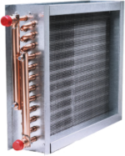HVAC coil replacement does not have to be cost prohibitive. As you are all aware, money is tight these days, and budgets for maintenance and upkeep are constantly being cut. People are asked to do more with less, so every dollar spent must be spent wisely. In our previous newsletters, we have outlined various reasons about why you should do business with Capital Coil & Air. However, one of the most compelling reasons is cost and how you spend your money.
We now live in an age where you can skip “middle men” and buy direct from a manufacturer or supplier. Think about your own life and how your own personal shopping habits have changed over the years. When was the last time you used a travel agent to book a trip? In 2020, you’re much more likely to go to Tripadvisor or an airline’s website and make travel reservations yourself. Greater access to more choices gives you the opportunity to save money in the process.
Spending money in business these days is no different. Consumers have access to more information than ever before. Consumer studies show buyers get 60% of their product information from a firm’s website before ever speaking with a sales rep. The days of an account manager or manufacturer’s representative being the sole source of information are over. Right now, you can access Capital Coil’s website and see our entire HVAC product offering, including dimensions, quick-ship programs, and our Coil Selection Program. With information at the press of a button, Capital Coil’s expert customer service will consult with you to ensure that you’re getting exactly what you need, when you need it. Working with Capital Coil & Air directly cuts out that “middle man’s” costly mark-up and saves you money without sacrificing quality. Avoiding the “middle man” and having a direct line to the manufacturer also ensures quick response times, and helps to make sure that no information gets lost in translation.
Capital Coil & Air does have a select number of exceptional representatives in a few areas, and because they are valuable assets in the HVAC industry, we are comfortable passing your project information along to those representatives. But if not in one of those areas, you are free to work with us directly.
At the end of the day, technology has allowed you as the consumer to buy smarter, faster, and cheaper. Aside from those previously mentioned “middle men” who does not want faster and cheaper? Capital Coil & Air would like the opportunity to be your “direct supplier” on present and future projects. Give us a call and test us out!
RELATED POSTS
Top 10 Questions You SHOULD Be Asking Your Coil Supplier

